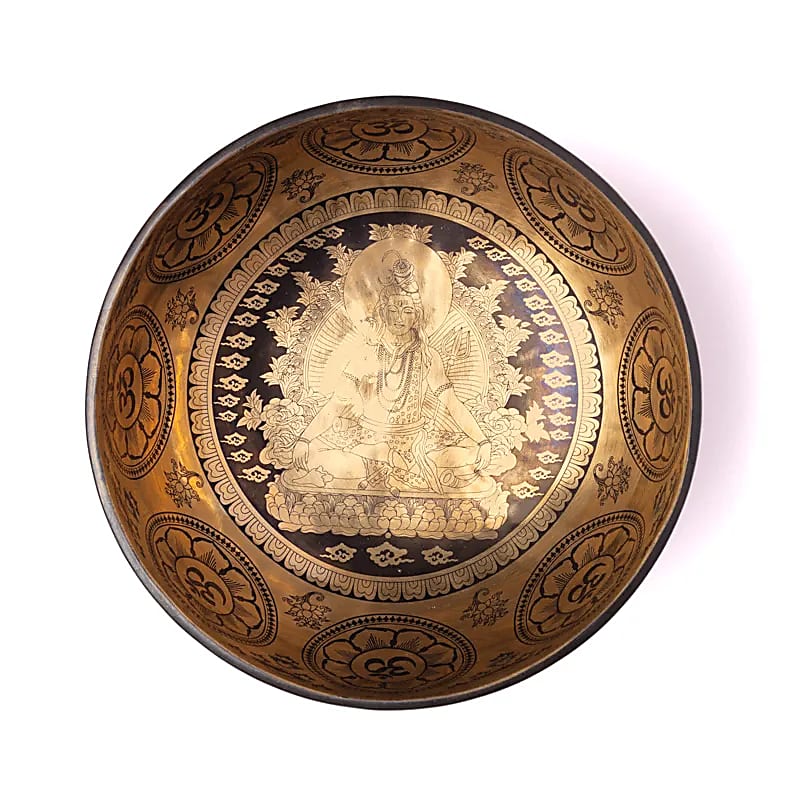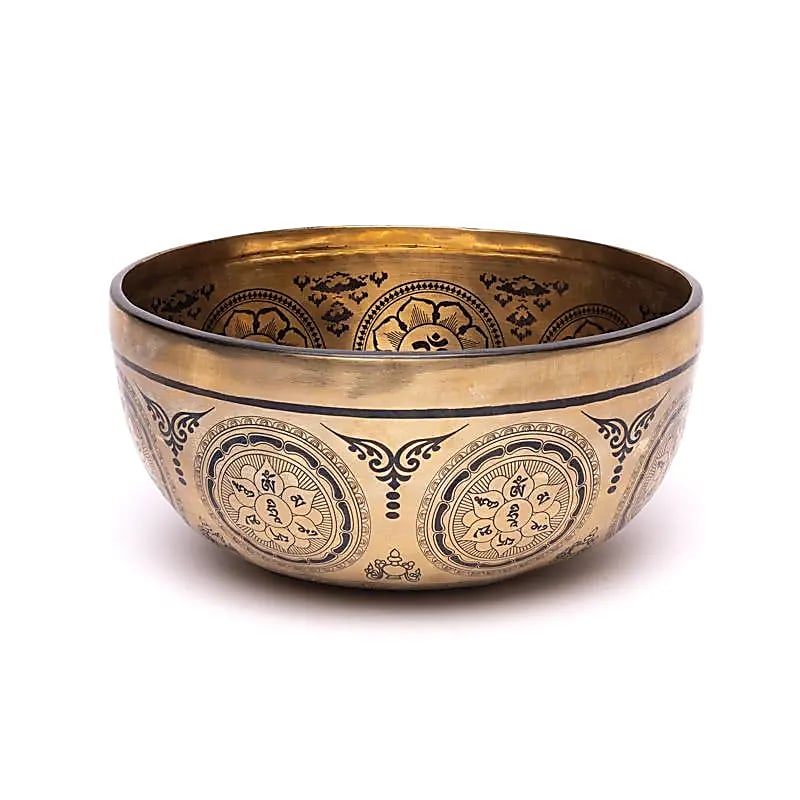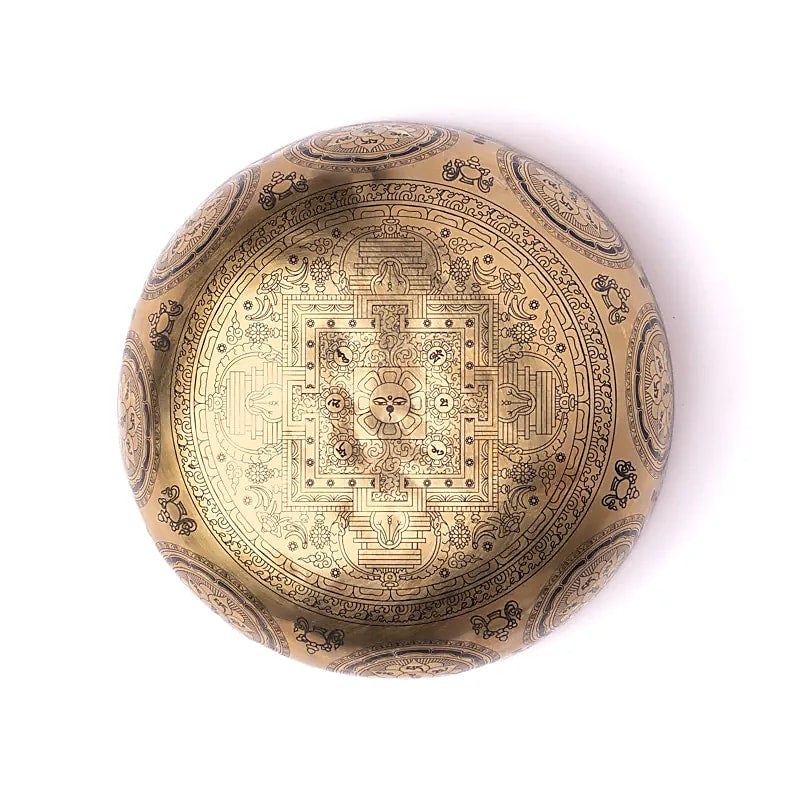7-metal bowl with 'Shiva' engraving, measuring 22/24 centimeters - approximately 1400/1600 grams. Sold with a matching mallet! Magnificent piece, handmade in Nepal!
7-metal bowl with 'Shiva' engraving, measuring 22/24 centimeters - approximately 1400/1600 grams. Sold with a matching mallet! Magnificent piece, handmade in Nepal!
Couldn't load pickup availability
About the product:
Shiva – Cosmic Consciousness The engraving combines Shaivite iconographic elements—crescent moon, third eye, snake ornament, and tiger skin—with six lotuses marked with the symbol Om, representing the cycle of time, inner vision, and protective wisdom.
Shiva's meditative posture invites practices focused on transformation, awareness and renewal.
The mandala below reflects the seven chakra system, interwoven with traditional Vajrayana motifs—Bumpa vase, wish-fulfilling jewels, lotus petals—offering a richly layered meditation medium for sound therapy or deep introspection.
Ideal for purification rituals or any sound work aimed at clarity, balance and spiritual awakening.
- Made in Nepal
In 7 metals.
Click here to see our mallet selections
Please note: This incredible bowl is like a work of art, with all the engravings that take several weeks to complete. Each bowl is unique!
The percentages of metals, diameter and thickness of the different bowls provide the specific sound and harmonics of each singing bowl.
Each bowl is therefore unique.
Handmade singing bowl made of copper, tin and 7 noble metals: copper, tin, nickel, zinc, iron, lead, mercury, silver.
Please note: All our handmade singing bowls are sorted by weight. The diameter mentioned is an approximate guideline, so you have a general idea of the bowl's width.
Information about the process of hammering Tibetan singing bowls: The process of hammering singing bowls is entirely done by hand.
Each singing bowl is hammered following a series of procedures that will give the bowl the perfect shape.
During the manufacturing phase, different metals that make up the bowl are melted in a furnace (copper, tin, iron, lead, gold and silver) depending on the type of bowl desired, such as bronze bowls or those of the seven metals.
The molten metal is then poured into a mold to obtain a metal disc of the desired size and thickness.
At this stage, the metal disc is modeled after being weighed and measured very precisely and then is classified according to the type of bowl to come.
As for the actual hammering process, 4 or 5 discs are stacked on top of each other and then heated until they become incandescent.
The formed glowing metal disc is then hammered by skilled craftsmen until the metal is no longer hot; then it is heated again and hammered again.
These two operations, heating and hammering, continue until the desired shape and size are achieved (which explains why hammered singing bowls can vary by a few centimeters from one another). When hammering the bowls, the metal disc should be beaten while it is still hot, because it is more flexible.
Once cooled, in fact, the metal loses its flexibility and becomes increasingly brittle, thus risking cracks that would occur if struck. Once the desired shape is achieved, the stages of manufacturing the bowl itself begin.
Each bowl is brought to the desired shape and size, repeating the heating and hammering phase if necessary.
Once the desired shape and size are achieved, the bowl is hammered to perfection. Individual bowls are then chiseled and finished inside and out.
Attention please!
Share






